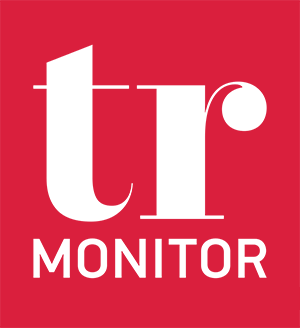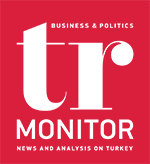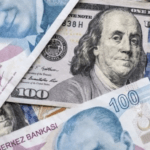BY PROF. DR. BURAK ARZOVA
“As part of the communication of the policy decisions, the public will continue to be transparently informed about pricing behaviors, developments of the factors affecting inflation, and how these developments affect decisions,” the 2024 Presidential Program read. It also said this will be done by using communication tools more efficiently, and work will be conducted to announce the decision to the target audience.
This development about the Central Bank’s communication with the public in 2024 is promising. I always ask myself why they still need to do it and wait for 2024. There were numerous forecasts before the bank’s rate hike in October.
It is only possible to say things go well if the market expectations and the public realizations converge. Apart from the confusion about the rate hike, the market and economy administration separation regarding the year-end inflation for 2024 gradually increases.
New policy rate hits 35%
It is impossible to understand why communication is complex, and there is no effort for that.
The Central Bank, which raised the policy rate by 500 basis points, took action in line with the average forecasts. Thus, our new policy rate has reached 35%.
“The strong course of domestic demand, the stickiness of services inflation, and deterioration in inflation expectations continue to put upward pressure on inflation,” the Central Bank’s Monetary Policy Committee (PPK) said in the statement.
Let’s see if the situation is so.
No one doubts it’s necessary to cool the Turkish economy, which overheated in 2021 and 2022. If your car has troubles and low capacity, you cannot drive in the left lane. When you start driving, you may proceed until the engine can’t carry you, and then you are stranded and wait for a tow truck.
The Central Bank’s successive rate hike decisions bring more tightening as the normalization steps complying with quantitative and selective credit policies are expected. The empirical situation points to this.
However, indicators don’t show that sharp contraction. For instance, the capacity utilization rate rose by 0.1 points to 77.4% in October, month-over-month. However, there was a 0.5-point hike in consumer goods and a 0.4-point decrease in durable consumer goods, while the capacity usage hike was 0.6 points in non-durable goods and 0.5 points in investment goods in the same period.
Tightening is more effective on durable consumer goods. This decrease may be sharper in the upcoming months. This data shows one of the reasons why business people speak up.
Trying to cool the overheated economy by reducing demand with spending control progresses, but it happens slowly. But the opinion about inflation decrease has yet to be formed.
The seasonally adjusted real sector confidence index rose by 0.2 points to 105.3 in October compared to the previous month. The surveyed real sector firms estimate production volume to decrease in the next three months, overall orders and domestic orders to decline, exports to drop, and total employment to fall. There is also an anticipation of a hike in average unit costs and sales prices. The real sector representatives aren’t optimistic about cost inflation. They don’t look convinced about inflation decrease.
The current total orders slightly increased. It shows that the demand conditions are still ‘hot.’
In July, survey participants stated that one factor limiting production was insufficient demand at 13.1%. The share of insufficient demand rose by 0.7 points to 13.8% after the tightening steps. Financial constraints, which include elements such as access to loans, fell by 0.5 points. Firms have easier access to loans compared to July 2023. That looks like the result of the normalization steps.
The confidence index increased by 0.5% in the services sector and dropped by 3.3% in the retail trade sector in October. It indicates how the rigidity in the services sector will be overcome in the fight against inflation. The demand rose by 0.9% in the last three months. One of the most fundamental problems in the fight against inflation is the service inflation rigidity at home, which is also a problem abroad.
Undoubtedly, the most important indicators regarding the decrease or increase in consumer demand are road motor vehicles registered to the traffic, major appliances sales, and housing demand. These three data are incredibly crucial to see the immediate impact of measures.
The number of road motor vehicle registrations fell by 15.5% in September compared to the previous month. The decrease in second-hand automobile sales is salient. The models have become more findable, and sales campaigns become more frequent as the demand decreases. The contraction in consumer loans affects automobile sales directly. Yet, the number of road motor vehicle registrations soared by 93.9% in September, year-over-year. The decrease in demand proceeds with baby steps.
The data verifies that the Central Bank’s inflation determinations are correct and realistic.
The PPK statement reemphasized that the monetary transmission mechanism will be further strengthened by taking additional steps to increase the share of the lira deposits, and the decisions will continue on quantitative tightening and selective credit tightening to support the monetary policy stance, in addition to rate hikes.
We can find the answers about what comes up next in the 2024 Presidential Program.
Implementations that will prevent consumption hikes, which feed inflation and deteriorate economic balance in the fight against inflation, will be introduced, according to the program. To do this, the impacts of the current decisions to support policies to reduce inflation, including goods and services purchases with credit cards and installment periods in cash withdrawals, will be analyzed, and additional measures will be taken if necessary. Understandably, the contractionary pressure will continue through spending control in 2024. Hopefully, the effort to cool the economy won’t pave the way for a sharp contraction. A sudden and sharp shrinkage can easily cause us to abandon the program to fight against inflation. That is precisely what foreigners call a ‘challenge.’
Another point to fight against inflation is predictability. There is always unpredictability in decisions by the government regarding politics and the economy.
Statement about raising the wage in line with the forecasted inflation to fight against inflation and increasing prices of the managed and directed items above inflation (price hikes on the public side) disseminates that the forecasted inflation corresponds to the price hikes on the public side.
The price hikes in toll fees have been postponed to January 2024, which doesn’t change the reality.
Awaiting a discount from the private sector to fight against inflation and holding the public sector price hikes at an exorbitant level allows the private sector to take these increases as a reference.
The Central Bank does its part, and the economy administration tours worldwide to find sources. The expectation is that the politics will back these efforts without wasting them.
Hopefully, it will be so to the end.










